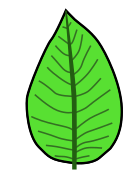Stamp: School building, branch and money box (Syria 1972)
School building, branch and money box (Syria 1972)
01 January (Syria ) within release Teachers' Syndicate goes into circulation Stamp School building, branch and money box face value 1 Syrian pound
| Stamp School building, branch and money box in catalogues | |
|---|---|
| Colnect codes: | Col: SY TS1972-01 |
Stamp is square format.
Inscribed "Teachers' Syndicate Contribution for Pension Funds" in Arabic Year of issue is approximate Revenue Reverend cat. no: ST6Also in the issue Teachers' Syndicate:
- Stamp - School building, branch and money box face value 1;
- Stamp - Children and blackboard face value 1;
|
Data entry completed
53%
|
|
|---|---|
| Stamp School building, branch and money box in digits | |
| Country: | Syria |
| Date: | 1972-01-01 |
| Perforation: | 12 x 12½ |
| Emission: | Revenue |
| Format: | Stamp |
| Face Value: | 1 Syrian pound |
Stamp School building, branch and money box it reflects the thematic directions:
A coin is a small object, usually round and flat, used primarily as a medium of exchange or legal tender. They are standardized in weight, and produced in large quantities at a mint in order to facilitate trade. They are most often issued by a government. Coins often have images, numerals, or text on them. The faces of coins or medals are sometimes called the obverse and the reverse, referring to the front and back sides, respectively. The obverse of a coin is commonly called heads, because it often depicts the head of a prominent person, and the reverse is known as tails.
A leaf (pl.: leaves) is a principal appendage of the stem of a vascular plant usually borne laterally aboveground and specialized for photosynthesis. Leaves are collectively called foliage, as in "autumn foliage", while the leaves, stem, flower, and fruit collectively form the shoot system. In most leaves, the primary photosynthetic tissue is the palisade mesophyll and is located on the upper side of the blade or lamina of the leaf but in some species, including the mature foliage of Eucalyptus,palisade mesophyll is present on both sides and the leaves are said to be isobilateral. Most leaves are flattened and have distinct upper (adaxial) and lower (abaxial) surfaces that differ in color, hairiness, the number of stomata (pores that intake and output gases), the amount and structure of epicuticular wax and other features. Leaves are mostly green in color due to the presence of a compound called chlorophyll which is essential for photosynthesis as it absorbs light energy from the sun. A leaf with lighter-colored or white patches or edges is called a variegated leaf.
A school is both the educational institution and building designed to provide learning spaces and learning environments for the teaching of students under the direction of teachers. Most countries have systems of formal education, which is sometimes compulsory.In these systems, students progress through a series of schools that can be built and operated by both government and private organization. The names for these schools vary by country (discussed in the Regional terms section below) but generally include primary school for young children and secondary school for teenagers who have completed primary education. An institution where higher education is taught is commonly called a university college or university.
A teacher, also called a schoolteacher or formally an educator, is a person who helps students to acquire knowledge, competence, or virtue, via the practice of teaching.





